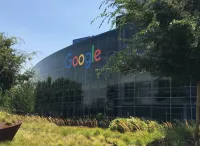Silicon Valley, located in Northern California's Santa Clara Valley, is a global hub for high technology and innovation. It represents the geographical area where high-tech businesses have thrived and is a metonym for California's high-tech sector. The region is renowned for its concentration of technology companies, startups, and venture capital firms, driving advancements in computing, software, and internet technologies.
1909: First Radio Station with Regularly Scheduled Programming
In 1909, Charles Herrold started the first radio station in the United States with regularly scheduled programming in San Jose.
1912: Federal Telegraph Corporation Contract with the Navy
In 1912, the Federal Telegraph Corporation signed a contract with the U.S. Navy for radio communication.
1921: Revenue Act of 1921
In 1921, The Revenue Act was established, leading to lower taxes on capital gains, which was more friendly to business investments than other countries.
1933: Commissioning of Air Base Sunnyvale
In 1933, Air Base Sunnyvale, California, was commissioned by the United States Government as a Naval Air Station (NAS) to house the airship USS Macon, and was renamed NAS Moffett Field.
1939: Founding of Hewlett-Packard
In 1939, Hewlett-Packard was founded in Packard's garage by Stanford graduates Bill Hewlett and David Packard.
1946: Frederick Terman Becomes Dean of Engineering at Stanford
In 1946, Frederick Terman became the dean of the school of engineering at Stanford University, where he encouraged faculty and graduates to start their own companies.
1947: U.S. Navy Blimp Operations Cease at NAS Moffett Field
Between 1933 and 1947, U.S. Navy blimps were based at NAS Moffett Field. In 1947, the Navy ceased its airship operations and moved most of its west coast operations to San Diego; NACA took over portions of Moffett Field for aeronautics research.
1951: Frederick Terman Proposes Stanford Industrial Park
In 1951, Frederick Terman proposed leasing Stanford's lands for use as an office park named the Stanford Industrial Park (later Stanford Research Park). The first tenant was Varian Associates.
1951: Formation of Stanford Industrial Park
In 1951, Frederick Terman spearheaded the formation of Stanford Industrial Park, where the university leased land to high-tech firms.
1953: Creation of the Small Business Administration
In 1953, the Small Business Administration was created to foster startups and provide a boost to entrepreneurs.
1953: Hewlett-Packard Moves to Stanford Research Park
Shortly after 1953, Hewlett-Packard moved its offices into the Stanford Research Park.
1954: Stanford Originated the Honors Cooperative Program
In 1954, Stanford originated the Honors Cooperative Program to allow full-time employees of the companies to pursue graduate degrees from the university on a part-time basis.
1956: William Shockley Starts Shockley Semiconductor Laboratory
In 1956, William Shockley moved to Mountain View, California, to start Shockley Semiconductor Laboratory.
1957: Shockley Ends Silicon Transistor Research and "Traitorous Eight" Leave
In 1957, Shockley decided to end research on the silicon transistor at Shockley Semiconductor Laboratory. As a result, eight engineers left the company to form Fairchild Semiconductor; Shockley referred to them as the "traitorous eight".
1959: Invention of the Monolithic Integrated Circuit Chip
In 1959, the monolithic integrated circuit (IC) chip was invented by Robert Noyce at Fairchild.
1962: Licklider Headed IPTO
From 1962 to 1964, J.C.R. Licklider was the head of IPTO and initiated three of the most important developments in information technology: the creation of computer science departments at several major universities, time-sharing, and networking.
April 23, 1963: J. C. R. Licklider's Memorandum on the Intergalactic Computer Network
On April 23, 1963, J. C. R. Licklider issued a memorandum regarding his vision of a computer network, which he imagined as an electronic commons open to all.
1964: Licklider Headed IPTO
From 1962 to 1964, J.C.R. Licklider was the head of IPTO and initiated three of the most important developments in information technology: the creation of computer science departments at several major universities, time-sharing, and networking.
1964: Introduction of the First Commercial MOS IC
In 1964, the first commercial MOS IC was introduced by General Microelectronics.
1968: The Mother of All Demos
In 1968, Douglas Engelbart publicly demonstrated the mouse and hypertext-based collaboration tools in what is now known as The Mother of All Demos. Engelbart invented the mouse and hypertext-based collaboration tools in the mid-1960s and 1970s while at Stanford Research Institute.
1969: Stanford Research Institute Joins ARPANET
In 1969, the Stanford Research Institute operated one of the four original nodes that comprised ARPANET, the predecessor to the Internet.
May 1970: Early usage of the term "Silicon Valley"
In May 1970, an advertisement in the Peninsula Times Tribune mentioned a Palo Alto company that "helps production people in Silicon Valley," marking one of the earlier uses of the term outside of journalism.
1970: Lawyers Begin to Follow Venture Capitalists to Silicon Valley
During the 1970s, lawyers began to move from San Francisco down the Peninsula to serve the booming high-tech industry in Silicon Valley.
1971: Don Hoefler Traces Origins of Silicon Valley Firms
In 1971, Don Hoefler traced the origins of Silicon Valley firms, including via investments from Fairchild's eight co-founders.
1971: Introduction of the Intel 4004 Microprocessor
In 1971, the first single-chip microprocessor, the Intel 4004, was introduced by Intel. It was designed and realized by Federico Faggin along with Ted Hoff, Masatoshi Shima and Stanley Mazor.
1972: Venture Capital Firms Emerge on Sand Hill Road
In 1972, Kleiner Perkins and Sequoia Capital were founded on Sand Hill Road, marking the beginning of the emergence of venture capital in Silicon Valley.
April 1974: Intel Releases the Intel 8080 Microprocessor
In April 1974, Intel released the Intel 8080, the second 8-bit microprocessor designed and manufactured by Intel.
March 1975: First Homebrew Computer Club Meeting
In March 1975, the first meeting of the Homebrew Computer Club was held at French's garage in Menlo Park, California, marking the arrival of the MITS Altair microcomputer. This meeting inspired Steve Wozniak and Steve Jobs to design the Apple I computer, and the first preview of the Apple I was given at the Homebrew Computer Club.
December 1980: Apple Computer's IPO
In December 1980, Apple Computer had a successful $1.3 billion IPO, which led to an explosion in the availability of venture capital.
1980: InfoWorld Coverage of Microcomputer Industry
In 1980, Intelligent Machines Journal changed its name to InfoWorld, and, with offices in Palo Alto, began covering the emergence of the microcomputer industry in the valley.
1980: Immigrant Entrepreneurship in Silicon Valley
Since 1980, nearly a quarter of Silicon Valley's high-technology firms have been run by Chinese (17 percent) or Indian descent CEOs (7 percent).
1983: Founding of Silicon Valley Bank (SVB)
In 1983, Silicon Valley Bank (SVB) was founded by a group of former Bank of America executives to provide banking services to Silicon Valley entrepreneurs and their startup firms.
1984: Release of the First Thermal Drop-on-Demand Ink-Jet Printer by Hewlett-Packard
In 1984, Hewlett-Packard transformed the home-printing market when it released the first thermal drop-on-demand ink-jet printer.
1995: Growth of Commercial Internet Use and Initial Internet Startups
In 1995, the commercial use of the Internet grew substantially, leading to the emergence of initial internet startups like Amazon.com, eBay, and the predecessor to Craigslist.
1999: Immigrant Scientists and Engineers in Silicon Valley
A 1999 study reported that a third of Silicon Valley scientists and engineers were immigrants.
1999: High Concentration of Lawyers in Palo Alto
As of 1999, there were 2,400 lawyers practicing law in Palo Alto, a city of only 50,000 people, representing the densest concentration of lawyers in the United States outside of Washington, D.C.
April 2000: NASDAQ Stock Market Decline and Dot-Com Bubble Collapse
In April 2000, the NASDAQ stock market began to decline dramatically, leading to the collapse of the dot-com bubble, which had started in the mid-1990s. Real estate prices in Silicon Valley had reached unprecedented levels during this bubble era.
2000: Large Law Firms Establish Offices in Silicon Valley
By the year 2000, large law firms from all over the world were establishing offices in the mid-Peninsula region on or near Sand Hill Road, as Silicon Valley law firms became global trendsetters in business casual apparel.
2001: Re-emergence of Consumer-Focused Internet Companies
After the dot-com bust of 2001, the PayPal Mafia is sometimes credited with inspiring the re-emergence of consumer-focused Internet companies.
2005: San Jose Leads in Utility Patents
In 2005, San Jose led the list of inventive towns in America with 3,867 utility patents filed, while Sunnyvale was second with 1,881 utility patents.
November 2006: Dismissal of Sexism Contributing to Gender Gap
After UC Davis published its Study of California Women Business Leaders in November 2006, some San Jose Mercury News readers dismissed the possibility that sexism contributed in making Silicon Valley's leadership gender gap the highest in the state.
November 2006: Low Percentage of Women CEOs in Silicon Valley
In November 2006, a report showed that only 8.8% of Silicon Valley companies had women CEOs, the lowest percentage in California.
2006: Silicon Valley as Inventive Center
A 2006 The Wall Street Journal story found that 12 of the 20 most inventive towns in America were in California, and 10 of those were in Silicon Valley.
January 2009: Unemployment Rate in Silicon Valley
In January 2009, the unemployment rate in Silicon Valley was 9.4%.
2010: Housing Shortage Emerges
Starting in 2010, Silicon Valley began experiencing a housing shortage due to a market imbalance between jobs created and housing units built, with 400,000 jobs created and only 60,000 housing units built between 2010 and 2015.
2011: Silicon Valley Receives High Venture Investment
In 2011, Silicon Valley received 41% of all U.S. venture investment.
2012: Silicon Valley Receives High Venture Investment
In 2012, Silicon Valley received 46% of all U.S. venture investment.
2012: Pao v. Kleiner Perkins Lawsuit Filed
In 2012, the lawsuit Pao v. Kleiner Perkins was filed by Ellen Pao for gender discrimination against her employer, Kleiner Perkins.
June 2014: Transparency Reports on Employee Breakdowns
In June 2014, Yahoo! said that 15% of its tech jobs were held by women, 2% of its tech employees were black and 4% Hispanic. Facebook reported that 15% of its tech workforce was female, and 3% was Hispanic and 1% was black.
August 2014: Diversity in Tech
In August 2014, Apple reported that 80% of its global tech staff was male and that, in the U.S., 54% of its tech jobs were staffed by Caucasians and 23% by Asians. USA Today published an article about Silicon Valley's lack of tech-industry diversity, pointing out that it is largely white or Asian, and male.
October 2014: Recruiting Women in Tech
As of October 2014, Apple, Facebook, Google, and Microsoft attended the 20th annual Grace Hopper Celebration of Women in Computing conference to recruit and potentially hire female engineers and technology experts. The second annual Platform Summit was held to discuss increasing racial and gender diversity in tech.
2014: Tech Crunch Estimate of Public Firms
In 2014, Tech Crunch estimated 92 public firms of 130 related listed firms then worth over US$2.1 trillion with over 2,000 firms traced back to key investors in Kleiner Perkins and Sequoia Capital.
January 2015: Reports of Sexism and Misogyny in Silicon Valley
A January 2015 issue of Newsweek magazine featured an article detailing reports of sexism and misogyny in Silicon Valley.
February 2015: Pao v. Kleiner Perkins Case Goes to Trial
In February 2015, the gender discrimination case of Pao v. Kleiner Perkins went to trial in San Francisco County Superior Court.
March 27, 2015: Verdict in Pao v. Kleiner Perkins Case
On March 27, 2015, the jury found in favor of Kleiner Perkins on all counts in the Pao v. Kleiner Perkins gender discrimination case. The case resulted in major advances in consciousness of gender discrimination.
April 2015: Women Venture Capital Firms
As of April 2015, experienced women were engaged in the creation of venture capital firms which leveraged women's perspectives in funding of startups.
2015: Continued Housing Shortage
From 2010 to 2015, Silicon Valley experienced a housing shortage due to a market imbalance between jobs created and housing units built. As of 2015, San Jose was making an effort to develop shelters by renovating old hotels.
2015: Definition of Silicon Valley
In 2015, MIT researchers defined Silicon Valley to center on the municipalities of Menlo Park, Mountain View, Palo Alto, and Sunnyvale.
2016: High Housing Costs
As of 2016 a two-bedroom apartment rented for about $2,500 while the median home price was about $1 million in Silicon Valley. The Financial Post called Silicon Valley the most expensive U.S. housing region.
2016: Increase in Residents Planning to Leave the Bay Area
Since 2016, the number of residents in the Bay Area planning to leave within the next several years has increased by 35%, rising from 34% to 46%.
2017: Demographics in higher positions
A 2017 study showed that white males made up the majority of higher positions, with 58.7% holding executive positions and 46.5% being managers. The second highest position holders were Asian men, with 16.3% having executive positions and 17.9% being managers. African/Black and Hispanic/Latino people had the lowest percentages in all categories.
2018: Experiences of Black Technicians
In 2018, Harvard Business Review published an article discussing diversity and inclusion and gave statistics on black employees along with advice to future black technicians. LeRon L. Barton, a black man who spent over two decades in Tech, gave an insight on his work experiences.
August 2019: Record Low Unemployment Rate in Silicon Valley
As of August 2019, the unemployment rate in Silicon Valley decreased to a record low of 2.7%.
2019: Religious demographics
According to a 2019 Lincoln Network survey, 48% of high-tech workers in Silicon Valley identify as Christians, with Roman Catholicism (27%) being its largest branch, followed by Protestantism (19%).
April 2020: Peak Unemployment Rate in Silicon Valley
In April 2020, when unemployment was at its peak, the unemployment rate in Silicon Valley stood at 13.7%.
June 2021: Highest Percentage of Homes Valued at $1 Million or More
In June 2021, the San Jose Metropolitan Area had the highest percentage of homes valued at $1 million or more in the United States.
July 2021: Unemployment Rate Decrease in Silicon Valley
As of July 2021, the unemployment rate in Silicon Valley had fallen to 5.7%.
2021: Poverty Rate in Silicon Valley
As of 2021, 23% of Silicon Valley residents were living below the poverty line, with the definition of poverty being dependent on the context of the region's severe housing shortage and high housing prices.
2021: Silicon Valley IT Employment
As of 2021, the Silicon Valley region employed approximately half a million information technology workers.
2023: Wealth Inequality in Silicon Valley
A 2023 report found that the aggregate household wealth of Silicon Valley was nearly $1.1 trillion, with less than 1% of the population holding 36% of the wealth. The low-income poverty threshold set by the California Department of Housing and Community Development was $104,400 for single-person households in certain counties.
2023: Highest Average Wage for Lawyers in San Jose-Sunnyvale-Santa Clara
As of 2023, the San Jose-Sunnyvale-Santa Clara metropolitan area had the highest average wage for lawyers in the United States, at $268,570.
2023: Venture Capital Investment in Silicon Valley Surges Back
As of the first quarter of 2023, Silicon Valley's share of U.S. venture capital investment had surged back to 41%.
2024: Shift in Discourse Around DEI Initiatives
Late 2024 marked a shift in the discourse around DEI or diversity equity and inclusion initiatives in Silicon Valley as many tech companies faced economic headwinds and pressure to reduce costs, DEI programs were often the first thing out the door.
2025: Shift in Discourse Around DEI Initiatives
Early 2025 marked a shift in the discourse around DEI or diversity equity and inclusion initiatives in Silicon Valley as many tech companies faced economic headwinds and pressure to reduce costs, DEI programs were often the first thing out the door.
Mentioned in this timeline

Bank of America is a multinational investment bank and financial...
Facebook is a social media and networking service created in...
The United States of America is a federal republic located...

Google LLC is a multinational technology company specializing in online...
California is a U S state on the Pacific Coast...

The stock market serves as a platform where buyers and...
Trending

1 month ago Off-Broadway 'Grease' parody 'Vape' reimagines Danny, sparking discussions with Scott Silagy and Lara Strong.

Malala Yousafzai is a Pakistani activist advocating for female education notably in the Swat Valley where the Taliban restricted girls'...

Steven Matz is an American professional baseball pitcher currently playing for the Boston Red Sox in MLB Drafted by the...

2 months ago Natalie Portman: Ahsoka Season 2 Theory, Miss Dior Essence, AI Actress Controversy.

Zack Baun is an American football linebacker currently playing for the Philadelphia Eagles He played college football at Wisconsin before...

1 month ago Pamela Anderson Promotes Sonsie Skincare Line with NYC Pop-Up and New Adapt Cream.
Popular
Matt and Ross Duffer known as the Duffer Brothers are...
Aftyn Alyssa Behn is an American politician currently serving as...

Candace Owens is an American conservative political commentator and author...

Ilhan Omar is an American politician currently serving as the...

XXXTentacion born Jahseh Dwayne Ricardo Onfroy was a controversial yet...

Harriet Tubman was a pivotal American abolitionist and social activist...